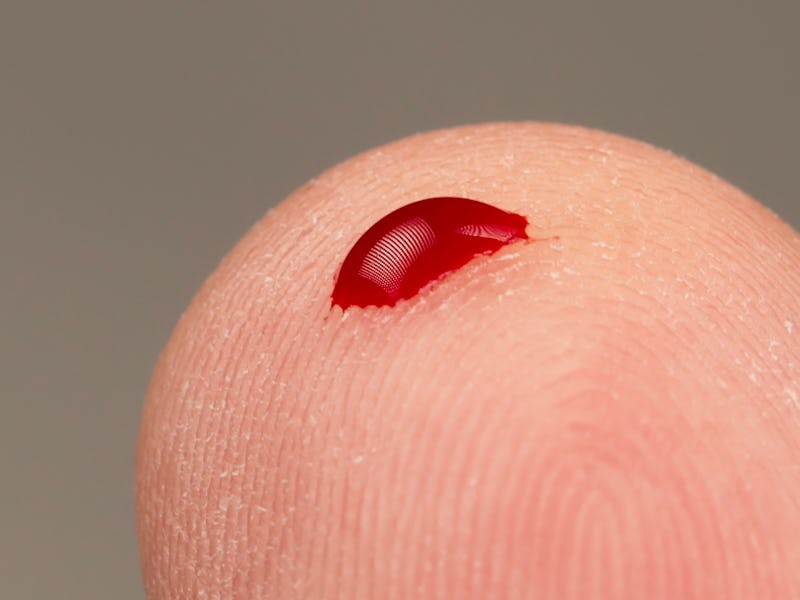US Government Issues Warning About Young Blood Plasma Transfusions
"We're concerned that some patients are being preyed upon by unscrupulous actors."

These days, people seeking to have a longer, healthier life can try a service that’s straight out of science fiction: transfusions of young blood. Specifically, the companies offering these services offer to transfuse patients with young donors’ plasma — the liquid portion of blood that carries cells and proteins. But if the U.S. Food and Drug Administration has its way, those companies might not be doing so for long.
"…some patients are being preyed upon by unscrupulous actors…
On Tuesday, the federal agency issued an official alert to consumers, warning them that the agency cannot confirm that the process is safe or therapeutically beneficial. In a statement, FDA commissioner Dr. Scott Gottlieb expressed his unease with the increasingly available practice:
Simply put, we’re concerned that some patients are being preyed upon by unscrupulous actors touting treatments of plasma from young donors as cures and remedies. Such treatments have no proven clinical benefits for the uses for which these clinics are advertising them and are potentially harmful. There are reports of bad actors charging thousands of dollars for infusions that are unproven and not guided by evidence from adequate and well-controlled trials.
Two bags of frozen plasma, the liquid portion of the blood after blood cells, platelets, and other cellular components, are removed.
The FDA statement doesn’t list these “actors,” but there are many public companies selling the service with a large price tag. In March, STAT reported that even just the tickets to symposiums in which the process was marketed to the elderly cost $195 a person. The founder of a transfusion company called Ambrosia, Jesse Karamzin, told Inverse in May that patients at the company’s clinics in San Francisco and Tampa can receive about 0.66 gallons of plasma, acquired from donors between the ages of 16 to 25, for the price of $8,000.
The End of Ambrosia
The FDA emphasized in its announcement that there is “no proven clinical benefit of the infusion of plasma from young donors in the prevention of conditions” such as aging, memory loss, dementia, Alzheimer’s, Parkinson’s Disease, and age-related macular degeneration — just some of the conditions that transfusion establishments purport to treat.
"Could it work in people as well?
Karamzin previously told Inverse that he was interested in translating existing research on animal blood transfusions and longevity into practical application, stating: “If it works so much in mice, it sort of seems like an interesting question — could it work in people as well?”
But on Tuesday, Ambrosia announced that it would cease patient treatments to comply with the FDA announcement. But that doesn’t mean that young plasma research for longevity has reached its end.
Young Plasma Has Some Benefits
Transfusions of young plasma to old mice were successful.
Much of the research that Karamzin referred to was conducted by Stanford neurologist Tony Wyss-Coray, Ph.D, who showed in 2014 that the transfusion of plasma from young to old mice improved age-related cognitive problems in the latter group. In 2016, Wyss-Coray and his team injected the blood plasma from young humans into older mice, which also improved cognition, memory, and physical health.
However, he did not advocate for human-to-human transfusions, telling Science in 2016 that “there’s just no clinical evidence [that the treatment will be beneficial], and you’re basically abusing people’s trust and the public excitement around this.”
Wyss-Coray was openly critical of Ambrosia’s interpretation of his work, which does involve plasma transfusions from younger to older humans. He went on to co-found Alkahest, a clinical-stage biotechnology company that takes a different approach than companies like Ambrosia: It’s looking for ways to develop drugs from its plasma transfusion research, not market plasma as the drug itself.
CEO and co-founder Dr. Karoly Nikolich tells Inverse: Alkahest is a clinical biotech company evaluating drug candidates under the oversight of the FDA, and as such, has never considered selling transfusions of plasma. We believe first and foremost in prioritizing the safety of our patients, and that rigorous clinical trials of carefully developed therapeutic formulations are the best way to test for efficacy and safety.”
The Future of Young Plasma
Nikolich views the FDA announcement as “completely warranted and validating of our approach to treating disease.” However, he hopes that the agency will eventually recognize that plasma can have beneficial effects if it’s properly applied, though he acknowledges the FDA will most likely never recognize whole plasma as a viable treatment for serious conditions.
Nevertheless, “both our plasma fractions and small molecule approaches to target key chronokines will be pursued through clinical trials and traditional regulatory pathways,” he says.
One big difference between Alkahest and companies like Ambrosia is that Alkahest is less focused on eternal youth and more focused on the serious diseases that can accompany aging — like Alzheimer’s, Parkinson’s, and age-related macular degeneration. Only time will tell whether these can be treated by medicines made from plasma, like Nikolich hopes.
The field is young, and the science may very well catch up. In 2017, a small Stanford study on 18 participants led by Dr. Sharon Sha showed that young human plasma donated to older patients with Alzheimer’s slightly improved their cognitive state. But the difference between Sha and Karmazin is that she knows it’s too soon to apply what she found here to the public at large.
“Obviously, what we don’t want for people to take away from this study is that it’s time to ask their 18-year old nephew to give them their blood so that they can live forever,” Sha told Inverse. “But the goal is really to say, number one, is this safe? And number two, can we repeat this in a larger sample of patients?”